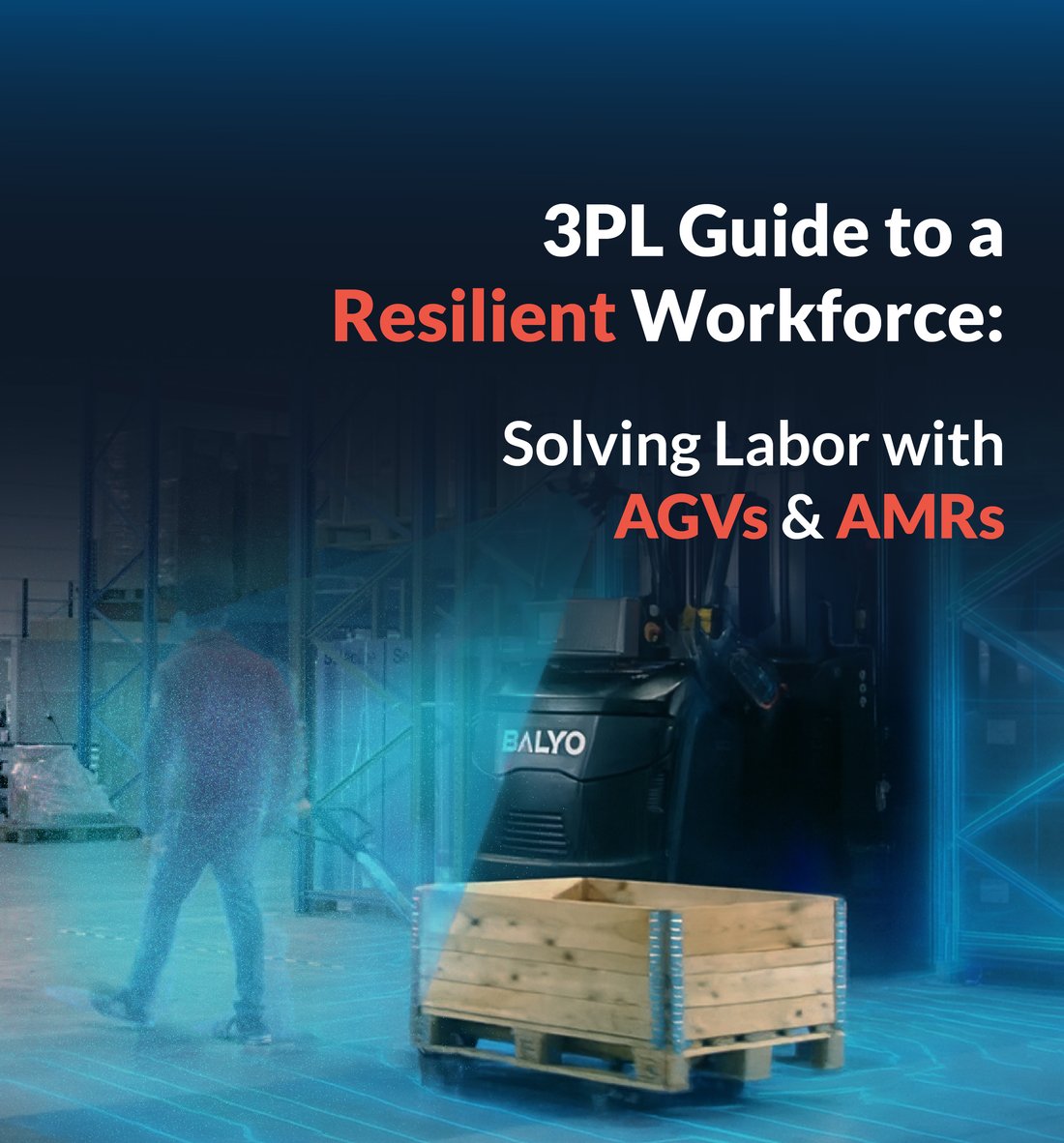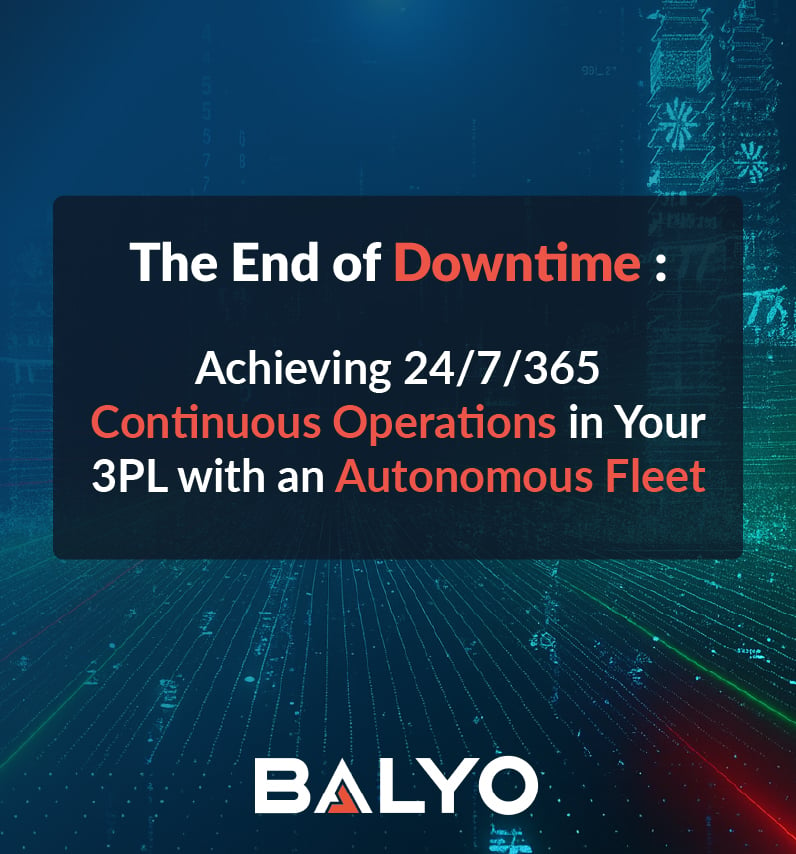
We hear one consistent message from leaders in the 3PL industry: the single greatest threat to growth, profitability, and client trust isn't a competitor or a market downturn—it's the worsening labor crisis. The struggle to find, train, and retain a reliable workforce has become a daily battle, creating an ongoing state of operational fragility that directly limits the ability to scale business and keep promises to clients. The solution isn't to simply hire more people; it's to re-architect the 3PL workforce by augmenting human teams with a new class of employee: the robotic worker.
When you can't staff a second shift, you can't take on a new client. When high turnover forces you to use inexperienced workers, order accuracy plummets and damages spike. When wage inflation outpaces your contract rates, your margins evaporate. The traditional model of simply "hiring more people" is broken.
But what if you could re-architect your workforce? What if you could build a team that was immune to labor shortages, infinitely scalable, and dramatically more productive? This isn't about replacing your human workers. It's about augmenting them with a new class of employee: the AGV robot, the AMR robot, and the autonomous forklift.
This guide is for the 3PL leader who is ready to stop fighting the labor war and start winning it. We will dissect the impact of the labor crisis, demystify the automation technologies that provide the solution, and lay out a practical vision for a resilient, human-led, robot-powered workforce that is built for the future.

Quantifying the 3PL Labor Challenge
To solve the problem, we must first appreciate its full scope. The labor crisis is a multi-faceted challenge that drains resources, creates risk, and stifles growth.
The Unfillable Shift
The demand for warehouse workers has consistently outpaced supply, creating a massive gap.
- According to a recent analysis, the warehousing and transportation industry had over 800,000 unfilled jobs in the United States, a number that demonstrates a critical structural shortage.¹
- This scarcity is compounded by an aging workforce and a lack of new entrants willing to take on physically demanding warehouse roles, ensuring the shortage is not a temporary trend but a long-term reality.
For a 3PL, this means growth is capped. You simply cannot find the people required to expand your operations, take on new clients, or handle surges in volume.
The Revolving Door of Turnover Rates
Even when you can fill positions, keeping them filled is another battle entirely. The warehouse industry is plagued by staggering employee churn.
- The turnover rate in the warehousing and transportation sector has soared to 57.3% annually, according to the U.S. Bureau of Labor Statistics.² This means you are likely replacing more than half of your frontline workforce every single year.
- The cost of this turnover is immense. The Society for Human Resource Management (SHRM) estimates that the total cost to replace an employee can be as high as 50-60% of their annual salary, with some estimates reaching even higher.³ For a $40,000/year employee, that’s a $20,000+ loss every time someone quits. These costs include recruitment, interviewing, training, and the lost productivity of a new hire's learning curve.
The Wage Spiral is A Direct Assault on Margins
The combination of high demand and low supply has ignited a fierce competition for labor, driving wages up at an unsustainable rate.
- Warehouse wages have been increasing at a rate significantly faster than the national average, with some markets seeing double-digit percentage increases year-over-year.⁴
- This wage inflation directly compresses the already thin margins of the typical 3PL contract. It creates a volatile, unpredictable cost structure that makes it nearly impossible to forecast profitability or price services competitively for the long term.

The New Workforce Mode is Humans and Robots
The solution to this crisis is not to find a way to hire more people into the same difficult jobs. The solution is to change the nature of the work itself. By automating the most repetitive, physically demanding, and least desirable tasks, you can elevate your human employees into more valuable, engaging, and safer roles. This is the human-led, robot-powered workforce. Let's meet your new robotic employees.
- AGV Robot (Automated Guided Vehicle): Think of a traditional AGV as a train on a fixed track, but without the physical track. It follows pre-defined paths using magnetic tape, wires, or reflectors. It's a workhorse for simple, repetitive A-to-B transport in a highly structured environment.
- AMR Robot (Autonomous Mobile Robot): An AMR robot is like a self-driving car for your warehouse. It uses sensors and onboard intelligence to build a map of your facility and can navigate dynamically, even maneuvering around unexpected obstacles like a misplaced pallet or a person. While beneficial for a host of applications, the AMR is best suited for goods-to-person lightweight transport.
- Autonomous Forklift: Arguably the most impactful technology for 3PL logistics, this solution marries the industrial brawn of a traditional forklift with the intelligent brains and vision of an AMR. These modern powerhouses of pallet pick-and-place learn your environment and use advanced LiDAR to navigate the most complex and dynamic spaces with ease.
By deploying these technologies, you automate the millions of miles your workers would otherwise spend walking or driving pallets around. This frees your human team to become the "mission control" for your entire operation.
How Automation Forges a Resilient and Engaged Workforce
Deploying automation does more than just fill a labor gap; it fundamentally transforms your workforce into a more stable, skilled, and scalable strategic asset.
1. Solve the Labor Gap, Unlock Growth
The most immediate benefit of an autonomous forklift fleet is its ability to handle the material transport workload of multiple employees, 24/7/365.
- A single autonomous forklift can often perform the work of 1.5 to 2.5 full-time employees over a three-shift operation.
- This immediately closes the labor gap, allowing you to meet your current service level agreements (SLAs) without resorting to excessive overtime or temp labor. More importantly, it gives you the operational capacity to confidently say "yes" to new clients and grow your business.
2. Easily Surmount Turnover Turmoil
People don't quit jobs; they quit bad jobs. Automation helps you eliminate the very aspects of warehouse work that cause burnout and drive turnover.
- Create Better Jobs: Instead of driving a forklift in circles for 8 hours, your employees become robot fleet managers, exception handlers, and quality assurance specialists. These are more technically skilled, mentally stimulating roles that provide a clear career path, significantly boosting job satisfaction and retention.
- Improve Workplace Safety: Automating physically strenuous and accident-prone tasks makes the entire warehouse safer. A safer workplace is a more attractive workplace, further reducing the incentive for employees to leave.
- Invest in Skills, Not Just Labor: Training an employee to manage a robotic fleet is an investment in their future. This demonstrates a commitment to your people that goes beyond a simple paycheck, fostering loyalty and reducing the likelihood of them leaving for a 50-cent-per-hour raise elsewhere.
3. Build an Infinitely Scalable Labor Pool
One of the biggest challenges in 3PL logistics is matching your labor to fluctuating demand. Automation solves this instantly.
- Meet Peak Season with a Click: When peak season hits, you don't need to hire and train a massive temporary workforce. You simply extend the operating hours of your robotic fleet. Your "labor pool" scales instantly, without any drop in quality or efficiency.
- Onboard New Clients in Record Time: Winning a new client is exciting, but the challenge of staffing for their volume can be daunting. With a scalable autonomous fleet, you can absorb that new volume quickly and reliably, turning a potential operational crisis into a smooth and profitable onboarding experience. This is a powerful competitive advantage.
Stop Managing a Crisis, Start Building Your Future
The labor crisis is not a problem to be managed; it's a reality that requires a fundamental shift in strategy. Continuing to fight for a shrinking pool of workers with escalating wages is a losing battle.
The future of 3PL logistics belongs to those who build a resilient, blended workforce where humans are amplified by technology. By embracing automation, you are not just solving your labor problem; you are creating a more efficient, more scalable, more profitable, and more human-friendly business. You are building an operation that is no longer at the mercy of the labor market, but one that is in control of its own destiny.
Don't let the labor gap limit your growth.
Contact BALYO to discover how an autonomous forklift fleet can build your resilient workforce of the future.
Citations
¹ U.S. Chamber of Commerce. (2024). The State of American Business: The Labor Shortage. https://www.uschamber.com/workforce/the-state-of-american-business-the-labor-shortage
² U.S. Bureau of Labor Statistics. (2025). Job Openings and Labor Turnover Survey (JOLTS), "Transportation, Warehousing, and Utilities" Table. https://www.bls.gov/jlt/
³ Society for Human Resource Management (SHRM). Turnover and Retention: The True Cost of a Lost Employee. https://www.shrm.org/resourcesandtools/tools-and-samples/hr-qa/pages/costofattrition.aspx
⁴ EmployBridge. Annual Warehouse Employee Opinion Survey. https://www.employbridge.com/resource-center/workforce-trends/



